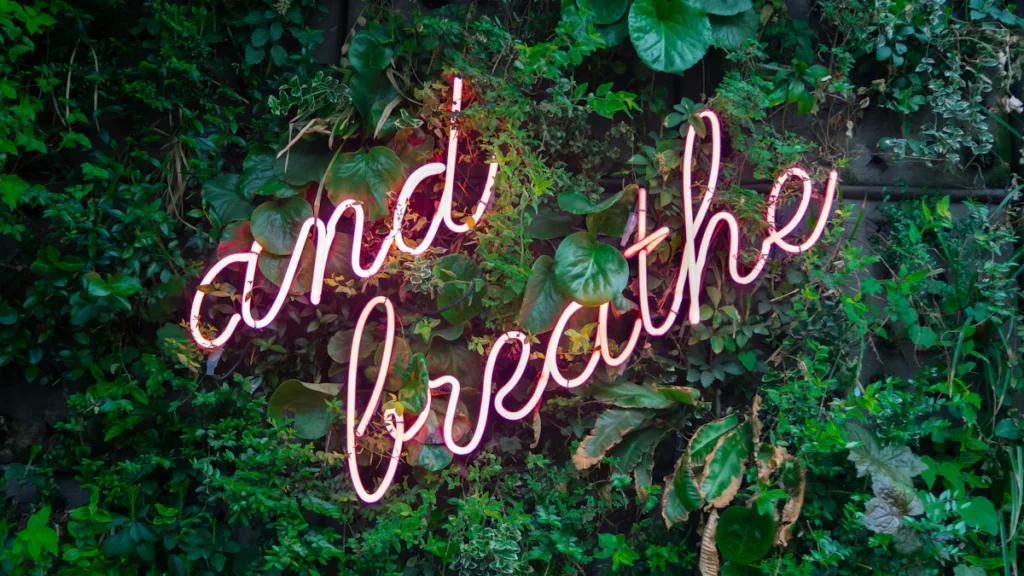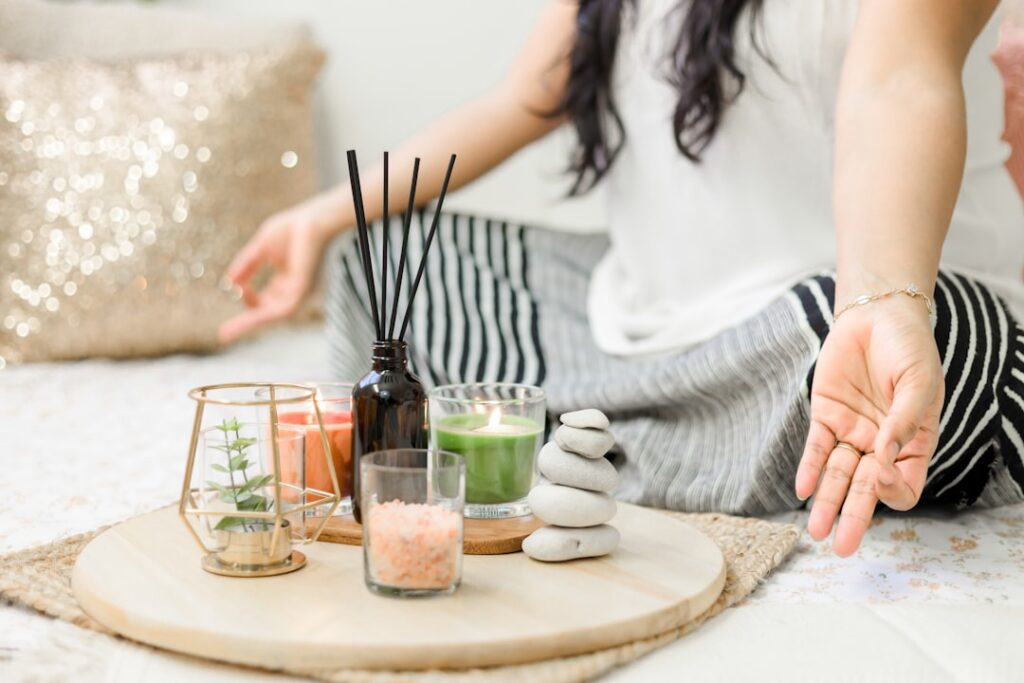5 Quick Tips for Stress-Free Living
Stress has become a constant companion for many of us in today’s fast-paced world. Studies reveal that 40% of adults experience stress daily, and 53% believe it significantly impacts their mental health. Stress and anxiety often lead to physical and emotional challenges, including depression and coronary disease. To maintain well-being, we must adopt effective stress management techniques. Simple, actionable methods can help us relax and regain control over our lives. By learning how to manage stress, we can create a healthier balance and improve our overall quality of life.
Key Takeaways
Practice deep breathing techniques, such as box breathing or 4-7-8 breathing, to quickly calm your mind and body during stressful moments.
Incorporate short breaks into your daily routine to recharge; even a few minutes of stretching or mindful breathing can significantly reduce stress.
Engage in regular physical activity, like walking or yoga, to release endorphins and improve your overall mood and resilience against stress.
Build and maintain strong social connections by reaching out to friends and family; sharing your thoughts can provide emotional relief and support.
Create a relaxing environment at home by decluttering, using calming scents, and adjusting lighting to foster a sense of peace and clarity.
https://4de50cl1sb0p9o1qqegfmap1xu.hop.clickbank.net
Practice Deep Breathing for Stress Management

Stress often feels overwhelming, but one of the simplest and most effective tools for stress management is already within us—our breath. Deep breathing, a foundational relaxation technique, can help calm the mind and body in moments of tension. By focusing on intentional breath control, we can activate the parasympathetic nervous system, which promotes relaxation and reduces the production of stress hormones.
Why Deep Breathing is a Powerful Stress Reliever
Deep breathing works because it directly influences our physiological responses to stress. When we feel anxious, our breathing becomes shallow and rapid, signaling the body to stay in a heightened state of alertness. By taking slow, deep breaths, we send a message to the brain that it’s time to relax. This process lowers heart rate, reduces blood pressure, and decreases cortisol levels.
Scientific studies highlight the effectiveness of deep breathing in improving mood and reducing stress. For example, research on the relaxation response shows that slowing the breath can significantly lower stress hormones. Another study on breathwork interventions found that these techniques not only reduce stress but also alleviate symptoms of anxiety and depression. The benefits of deep breathing extend beyond immediate stress relief; regular practice can improve overall emotional resilience.
Quick Ways to Reduce Stress with Breathing Exercises
Incorporating deep breathing into your daily routine doesn’t require much time or effort. Here are some quick ways to reduce stress using simple breathing exercises:
Box Breathing: Inhale for four counts, hold your breath for four counts, exhale for four counts, and pause for another four counts. Repeat this cycle for a few minutes to regain focus and calmness.
Diaphragmatic Breathing: Place one hand on your chest and the other on your abdomen. Breathe deeply through your nose, ensuring your abdomen rises while your chest remains still. Exhale slowly through your mouth. This technique encourages full oxygen exchange and promotes relaxation.
4-7-8 Breathing: Inhale through your nose for four counts, hold your breath for seven counts, and exhale through your mouth for eight counts. This method is particularly effective for calming the mind before sleep.
Progressive Relaxation with Breathing: Combine deep breaths with muscle relaxation. Inhale deeply, tense a specific muscle group (like your shoulders), and then exhale while releasing the tension. Move through different muscle groups for a full-body relaxation experience.
These exercises are not only quick but also versatile. You can practice them at your desk, during a break, or even while lying in bed. Over time, consistent use of these techniques can help you build a habit of mindfulness and relaxation.
Deep breathing also pairs well with other relaxation techniques like meditation. For instance, combining breathwork with mindfulness meditation enhances focus and amplifies the benefits of meditation. Whether you’re looking for quick ways to reduce stress or seeking long-term stress relief, deep breathing offers a practical and accessible solution.
Take Short Breaks to Recharge and Reduce Stress
In the hustle of daily life, it’s easy to overlook the power of a simple pause. Taking short breaks isn’t just about stepping away from work; it’s about giving your mind and body the chance to reset. When I feel overwhelmed, even a brief pause helps me regain focus and energy. These moments of rest act as powerful tools for stress management, allowing us to approach challenges with a clearer perspective.
The Importance of Pausing to Manage Stress
Pausing during a busy day can feel counterproductive, but it’s one of the most effective ways to reduce stress. When we push ourselves without stopping, our mental and physical energy depletes quickly. A short break acts as a reset button, helping us recharge and avoid burnout. Research shows that stepping away from tasks, even for a few minutes, improves concentration and reduces feelings of overwhelm.
“Taking a break helps in recharging the brain and body.” – Morning Coffee Beans
Breaks also allow us to reconnect with what truly matters. When I pause, I take a moment to reflect on my priorities. This helps me refocus on tasks that align with my goals rather than getting lost in unnecessary distractions. It’s not just about stopping work; it’s about listening to what my mind and body need to feel refreshed and balanced.
Simple Stress Relievers During Breaks
https://43468lk4-350lw5w31xm6i242w.hop.clickbank.net
Short breaks don’t require elaborate plans. In fact, some of the best stress relievers are simple and accessible. Here are a few ideas I’ve found effective:
Stretching: A quick stretch can release tension in the body. Focus on areas like your neck, shoulders, and back, where stress tends to accumulate. Stretching improves circulation and leaves you feeling more relaxed.
Mindful Breathing: Use your break to practice deep breathing. Even a minute of focused breathing can provide immediate relief and help calm your mind.
Take a Walk: A short walk, even around your home or office, can work wonders. Movement boosts endorphins, which are natural stress relievers, and helps clear mental fog.
Massage Your Hands or Neck: A self-massage can ease muscle tension and promote relaxation. Gently rub your temples, neck, or hands to release built-up stress.
Listen to Music: Play a favorite song or calming instrumental track. Music has a unique ability to shift our mood and provide a sense of relief from stress.
These activities don’t take much time, but they make a significant difference. I’ve noticed that incorporating these small moments of care into my day helps me stay productive and maintain a sense of calm. The key is consistency—making breaks a regular part of your routine ensures you’re always giving yourself the chance to recharge.
Short breaks are more than just pauses; they’re opportunities to reset, refocus, and reconnect. By taking these moments seriously, we can build resilience and approach stress with greater confidence.
Move Your Body to Manage Stress Effectively
When stress builds up, I’ve found that moving my body can work wonders. Physical activity doesn’t just improve physical health—it’s one of the most effective stress relievers available. Engaging in movement releases endorphins, often called “feel-good” hormones, which naturally elevate mood and reduce tension. It also provides a healthy distraction, helping me shift focus away from daily worries.
Physical Activity as a Natural Stress Reliever
Exercise acts as a powerful antidote to stress. When I engage in physical activity, my body undergoes changes that directly combat stress. For instance, endorphins flood the system, creating a sense of well-being. At the same time, physical movement reduces cortisol, the hormone responsible for stress. This dual effect leaves me feeling calmer and more balanced.
Scientific research supports this. According to Harvard Health Publishing, regular physical activity not only reduces stress but also improves sleep, lowers blood pressure, and enhances overall mental health. Even simple activities like brisk walking can make a significant difference. The Mayo Clinic highlights that exercise serves as a valuable distraction, allowing the mind to reset and refocus. I’ve noticed that after a workout, I approach challenges with greater clarity and resilience.
Another benefit of exercise is its ability to build stress resilience over time. Studies published in Nature Communications reveal that consistent movement helps individuals handle stressful situations more effectively. This means that the more I move, the better equipped I am to face life’s pressures.
Quick Ways to Incorporate Movement into Your Day
Incorporating movement into a busy schedule doesn’t have to be complicated. I’ve discovered several simple ways to stay active, even on hectic days:
Take a Walk: A 10-minute walk around the block can instantly lift your mood. Walking outdoors adds the bonus of fresh air and a change of scenery.
Stretch at Your Desk: If you’re short on time, try stretching your arms, shoulders, and neck while seated. This relieves tension and improves circulation.
Do Some Yoga: Yoga combines movement with mindfulness, making it an excellent stress reliever. A few sun salutations or gentle poses can help you feel grounded and relaxed.
Dance It Out: Put on your favorite song and dance for a few minutes. It’s a fun way to boost energy and release stress.
Use Stairs Instead of Elevators: Climbing stairs is a quick way to get your heart rate up and sneak in some physical activity during the day.
These small actions add up. I’ve learned that consistency matters more than intensity. Even short bursts of movement can have a lasting impact on stress levels. The American Psychological Association emphasizes that physical activity improves sleep and counteracts the negative effects of stress on the immune system. This motivates me to prioritize movement, no matter how busy life gets.
Whether it’s a structured workout or a quick stretch, moving your body is one of the simplest ways to manage stress effectively. By making physical activity a regular part of my routine, I’ve experienced not only reduced stress but also improved overall well-being.
https://41f0amx8q7dtgv8nym9a1b6v4e.hop.clickbank.net
Connect with Others for Emotional Support
Stress can feel isolating, but I’ve learned that connecting with others provides powerful emotional relief. Building meaningful relationships offers more than companionship—it creates a support system that helps me navigate life’s challenges. When I share my thoughts and feelings with trusted individuals, I feel lighter and more grounded. Social connections act as natural stress relievers, offering comfort and perspective during difficult times.
Social Connections as a Key to Stress Management
Strong social bonds play a critical role in stress management. When I lean on friends or family, I notice my stress levels decrease. Talking through problems or simply spending time with loved ones helps me process emotions and reduce anxiety. According to researchers at Massachusetts General Hospital, social connection is the strongest protective factor against depression. This finding underscores the importance of maintaining relationships for mental well-being.
Social interactions also provide a sense of belonging, which combats feelings of loneliness. When I feel supported, I’m better equipped to handle stress. Psychologists emphasize that having someone to rely on can significantly improve emotional resilience. They suggest that if you’re struggling to connect, seeking counseling can help you develop strategies to strengthen your social skills and build meaningful relationships.
I’ve found that even small interactions, like chatting with a neighbor or calling a friend, can make a big difference. These moments remind me that I’m not alone in facing life’s challenges. They also offer opportunities to share laughter, which acts as a natural stress relief by releasing endorphins and improving mood.
Easy Ways to Build and Strengthen Relationships
Building and maintaining relationships doesn’t have to feel overwhelming. I’ve discovered several simple ways to nurture connections and create a strong support network:
Reach Out Regularly: A quick text or phone call can go a long way. I make it a habit to check in with friends and family, even if it’s just to say hello.
Join a Group or Community: Participating in activities I enjoy, like a book club or fitness class, helps me meet like-minded people. Shared interests create a natural foundation for connection.
Practice Active Listening: When I engage in conversations, I focus on truly hearing the other person. This builds trust and strengthens bonds.
Offer Help and Support: Acts of kindness, like helping a friend move or offering a listening ear, deepen relationships. Giving support often leads to receiving it in return.
Schedule Quality Time: I prioritize spending time with loved ones, whether it’s a coffee date or a weekend hike. These moments create lasting memories and reinforce connections.
These strategies have helped me cultivate relationships that provide emotional support and stress relief. I’ve also learned that it’s okay to seek professional guidance when needed. Counseling offers valuable tools for improving communication and building stronger connections.
Social connections are essential for managing stress and enhancing overall well-being. By investing time and effort into relationships, I’ve experienced greater emotional balance and resilience. Whether it’s through a heartfelt conversation or a shared laugh, connecting with others reminds me of the strength found in community.
Create a Relaxing Environment to Reduce Stress

Creating a relaxing environment has transformed how I manage stress. I’ve realized that my surroundings directly influence my mood, energy, and ability to focus. By making intentional changes to my space, I’ve discovered simple ways to foster a sense of calm and promote mental clarity. A well-designed environment acts as one of the most effective stress relievers, helping me feel more grounded and at peace.
The Impact of Your Surroundings on Stress Levels
The spaces we occupy shape our mental and emotional states. When my environment feels cluttered or chaotic, I notice an immediate increase in stress. On the other hand, a clean and organized space brings me relief and helps me think more clearly. Research supports this connection. Studies show that exposure to natural environments reduces cortisol levels, a key stress hormone, and improves mental health. Even small interactions with nature, like adding plants to a room, can lower anxiety and enhance focus.
I’ve also found that lighting plays a significant role in stress management. Bright, harsh lights often make me feel tense, while soft, warm lighting creates a soothing atmosphere. Similarly, noise levels impact my ability to relax. Excessive noise heightens stress, but calming sounds, like gentle music or nature sounds, help me unwind. These adjustments remind me that my surroundings are powerful tools for managing stress.
Simple Adjustments for a Calming Space
Transforming your environment doesn’t require a complete overhaul. I’ve made small, practical changes that have had a big impact on my stress levels. Here are some adjustments I recommend:
Declutter Regularly: A clutter-free space promotes mental clarity. I dedicate a few minutes each day to tidying up, ensuring my surroundings remain organized and peaceful.
Incorporate Natural Elements: Adding plants or flowers to a room creates a connection to nature. This simple addition not only enhances aesthetics but also reduces stress and improves air quality.
Adjust Lighting: I use dimmable lights or lamps with warm tones to create a cozy ambiance. Natural light is another excellent option, as it boosts mood and energy levels.
Use Calming Scents: Aromatherapy has become one of my favorite relaxation techniques. Essential oils like lavender or eucalyptus fill my space with soothing scents that promote a sense of calm.
Create a Dedicated Relaxation Zone: I’ve set up a corner in my home with a comfortable chair, soft blankets, and a few books. This space serves as my go-to spot for unwinding after a long day.
Minimize Noise: Noise-canceling headphones or white noise machines help me block out distractions. When possible, I play calming music or nature sounds to create a tranquil atmosphere.
These adjustments have helped me turn my home into a sanctuary. I’ve noticed that when my environment feels peaceful, I sleep better and approach challenges with greater ease. The key is consistency—making small, intentional changes over time creates lasting benefits.
A relaxing environment isn’t just about aesthetics; it’s a powerful tool for stress relief. By prioritizing comfort and calmness in my surroundings, I’ve created a space that supports my well-being. Whether it’s through decluttering, adding natural elements, or adjusting lighting, these changes remind me that peace begins at home.
Managing stress requires consistent effort and practical strategies. The five tips I shared—deep breathing, taking breaks, moving your body, connecting with others, and creating a relaxing environment—serve as powerful tools for stress management. Each method offers unique benefits, from immediate relief to long-term well-being. Small, steady steps make the biggest difference. I encourage you to start with one tip and build from there. Remember, achieving a sense of calm and peace is a gradual process. With patience and persistence, you can create a life that supports your mental and emotional balance.
FAQ
What is the fastest way to reduce stress in a high-pressure situation?
When I face high-pressure moments, deep breathing works best. Techniques like box breathing or 4-7-8 breathing calm my mind and body within minutes. These exercises slow my heart rate and help me regain focus. I also find that stepping away briefly, even for a minute, helps reset my perspective.
How often should I take breaks during the day to manage stress?
I recommend taking a short break every 60 to 90 minutes. This schedule prevents burnout and keeps energy levels steady. Even a five-minute pause to stretch, breathe, or walk can make a big difference. Regular breaks improve focus and help me stay productive throughout the day.
Can physical activity really help with long-term stress management?
Yes, absolutely. Consistent movement builds resilience against stress. Activities like walking, yoga, or dancing release endorphins, which naturally boost mood. Over time, regular exercise lowers cortisol levels and improves sleep quality. I’ve noticed that even small daily movements, like climbing stairs, contribute to better stress management.
What if I don’t have time for a full workout?
Short bursts of activity work just as well. I often stretch at my desk or take a quick walk around the block. Dancing to a favorite song or doing a few yoga poses also helps. The key is consistency. Even five to ten minutes of movement can reduce stress and improve focus.
https://fiscalfitnessflow.com/index.php/2025/06/26/7-easy-tips-to-bring-mindfulness-into-your-daily-routine/
How can I strengthen social connections if I feel isolated?
Start small. I reach out to friends or family with a quick text or call. Joining a group or community with shared interests, like a hobby club, helps too. Active listening during conversations strengthens bonds. I’ve also found that offering support to others often leads to deeper connections.
Conclusion
As we wrap up our exploration into stress-free living, remember that achieving a tranquil and balanced life is within your reach through mindfulness, proper nutrition, and regular physical activity. By integrating these practices, you can significantly reduce stress and enhance your overall well-being. Now, I invite you to take the first step towards a calmer life by incorporating one of the strategies discussed today. Whether it’s dedicating time for meditation, revamping your diet, or prioritizing regular exercise, start small and notice the positive changes unfold. Embrace the journey towards a more peaceful existence and share your experiences or seek support from our community dedicated to wellness. Together, let’s build a life where stress takes a back seat to serenity.







